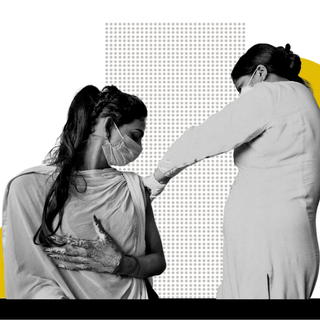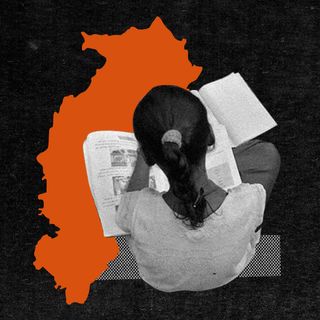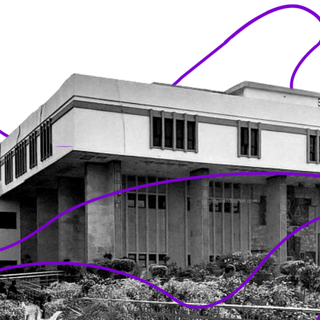The Gujarat HC noted on Monday that poor testing conditions and waning health infrastructure in rural areas are worsening the scale of the Covid19 second wave.
The bench, comprising Justices Bela Trivedi and Bhargav D., took cognizance of the shortage of resources, including remdesivir, oxygen, and hospital beds. It also urged authorities to ensure the preparedness of primary health centers along with proper training of staff — also directing the central government to notify the vaccination policy and records of the general public. Gujarat’s handling of the second wave has drawn criticism, with experts and journalists noting that the figures are underreported, a trend observed across other states like Uttar Pradesh and Bihar.
The high court in its ruling also raised concern about the rise of mucormycosis cases, calling it a “very serious issue.” Mucormycosis is a fungal infection that Covid19 patients are more vulnerable — doctors have ascribed the rise in cases to overuse of steroids, which lowers patients’ immunity. In Gujarat itself, there are at least 1,163 patients undergoing treatment for the fungal infection across five cities, according to an Indian Express report.
The antifungal drug used to treat mucormycosis — Amphotericin B — is in dangerously short supply. “The injections are not easily available as the manufacturers are few in numbers… Whatever had happened with Remdesivir (shortage) may occur with Amphotericin-B but the state government is trying to cover the requirement,” the Attorney General said, after the court asked the state government to ensure sufficient availability of the antifungal drug.
Related on The Swaddle:
People From Cities Are Taking up Vaccine Slots in Rural Areas Amid Shortage
This lack of resources to fight the virus is leaving rural areas particularly vulnerable. Most areas have no primary health centers or ones at a significant distance from the village; oxygen and drugs are in short supply; specialized medical personnel next to none. Social media, which is doubling as a site for amplifying SOS appeals in urban circles, is not an option for most.
“From entire families wiped out to bloated bodies floating down the Ganges River to farmland left untended due to a lack of workers,” a Bloomberg report highlights, taking note of the “carnage” unfolding in rural India.
The limited infrastructure is worsened with a vaccine shortage. In areas where the vaccine is available, most between the age bracket 18-44 are struggling to register themselves on Co-WIN; other times the slots run out as their tech-savvy urban counterparts hog slots in rural areas. A Hindu report noted only about 15% of people are immunized outside urban areas — despite these places reporting over 60% of the total cases.
Covid19’s rapid spread in peri-urban and rural areas was noted by the central government earlier this week after cases from Gujarat, Uttar Pradesh, and Bihar among states indicated the severity of the second wave in rural areas. The central government issued a slew of guidelines to ensure primary healthcare centers, Accredited Social Health Activists (ASHAs), and other links in the rural health system are prepared.
A similar scenario unfolded in the first wave of the pandemic, where Covid19 cases barreled through urban areas initially and then inundated rural areas. Ground reports are forecasting that the impact of the pandemic will be more pointed in these parts, a trend exacerbated because of lower vaccination numbers.
The acknowledgment of Covid19 spread in rural India is also important against the backdrop of a falling daily case count. Daily statistics may paint a hopeful picture of the second wave easing, but that is also partly due to the limited testing availability and lack of adequate data in rural parts, experts caution. For now, critical Covid19 treatment remains elusive for most people — who are neither being tested nor treated.




